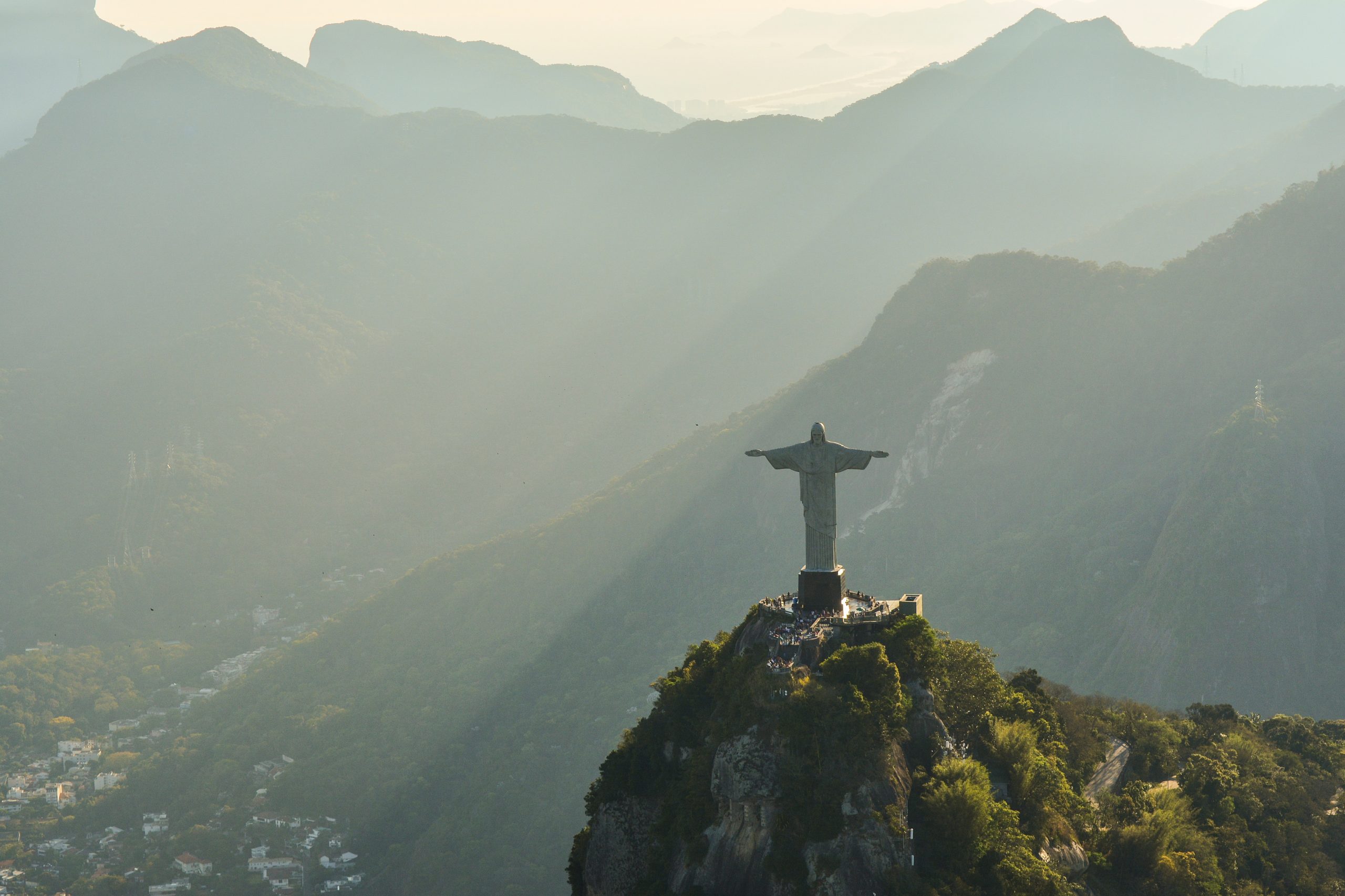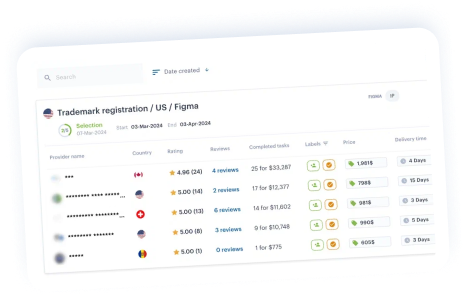By: Mônica Pinheiro & Yana Fonseca, PITANGA BASTOS, Brazil
The creation of industrial design is closely related to the idea of bringing projects into practice and getting results from them. Such innovations must be protected in such a way that ensures all benefits derived from their actual use go to those responsible for their creation. Therefore, design registration is an essential step in the process.
This article will explore the requirements, procedures, and issues related to the registration of industrial design in Brazil, providing a comprehensive guide to protecting designs in this market.
Contents
1. What can be registered as a design in Brazil?
3. The process of design registration in Brazil
4. Documents required for registering a design in Brazil
5. Design opposition process in Brazil
6. Costs of design registration in Brazil
7. Particularity of the registration in Brazil
1. What can be registered as a design in Brazil?
According to the Article 95 of the Brazilian Industrial Property Law (Nº 9.279/96), an industrial design is defined as “any ornamental plastic form of an object or any ornamental arrangement of lines and colors that may be applied to a product, that provides a new and original visual result in its external configuration, and that may serve as a type for industrial manufacture.”
In other words, the registration protects the new, individual, and original appearance that distinguishes a product from others. Read also about design patent registration in the US.
Furthermore, there are several requirements to register a design, such as:
-
- Novelty: To be supposedly new, the artificial design must not be encompassed in the state of the art, formed by everything accessible to the public in any means before the date of form in Brazil or abroad. The Brazilian law provides for a 180-day “period of grace” for the first exposure. This means that in Brazil, it’s possible to submit a product previously disclosed within this term if the design has been disclosed by the author or a person authorized by him.
- Originality: The design is deemed original when it results in a distinct visual configuration when compared to previous known objects (or patterns).
- Being a type of industrial manufacturing (industrial use): The object (or pattern) claimed for registration must be liable of being reproduced industrially in all its details. As said before, in Brazil, portions of an object that don’t live singly can’t be defended.
2. Why can you be refused?
The Article 100 of the of the Brazilian Industrial Property Law affirms that the following cannot be registered as a design:
“anything that is contrary to morals and good customs or that offends the honor or image of people, or violates freedom of conscience, belief, religious worship or ideas and feelings worthy of respect and veneration; the common necessary form of the object, or even that essentially determined by technical or functional considerations”.
Also, the work of a purely artistic nature is not considered to be an industrial design.
Moreover, it is important to highlight that portions of an object that do not exist independently cannot be protected in Brazil as a design. For example, applications claiming only the head of a hairbrush will not be accepted, considering it is not detachable from the handle.
On the other hand, it would be possible to apply for an automobile tire, since it is an independent object, possible to be manufactured separately.
3. The process of design registration in Brazil
In Brazil, industrial designs are protected by a specific and autonomous registration, not by patents.
The first step in registering an industrial design in Brazil is to file an application with the Brazilian Patent and Trademark Office (INPI). The application should include a description of the design, as well as any drawings or other visual representations that may be necessary to fully understand the design.
Once the application is filed, it will be submitted for a formal preliminary examination. This examination is primarily focused on ensuring that the application meets all of the formal requirements for registration, such as the inclusion of the necessary information and payment of the required fees.
If everything is in order, the design will be published in the INPI Official Gazette as well as granted at the same time. Therefore, simple compliance with the formal requirements, under Brazilian Law, is deemed sufficient for registration to be granted.
However, there is a period of 60 days following publication during which interested parties may file an opposition to the registration. The INPI will review any opposition and make a decision on whether or not to proceed with the registration.
The registration is valid for 10 years from the date of filing, and can be renewed for additional periods of 5 years each. It is the responsibility of the owner to pay the necessary renewal fees to maintain the validity of the registration.
4. Documents required for registering a design in Brazil
To register a design, the following documents are required for the application, as the Article 101 of the Brazilian Industrial Property Law (Nº 9.279/96) states:
- a request to register a design;
- a specification (if applicable), a claim (if applicable), drawings or photographs of the design;
- the field of application of the object according to the Locarno Classification;
- personal data of the applicant/design author;
- proof of payment of the filing fee.
Any person or legal reality can apply for protection, being Brazilian or foreigner. All documents included in the application for registration must be filed in the Portuguese language.
5. Design opposition process in Brazil
The industrial design is published at the same time as the decision to grant the corresponding registration is announced. Therefore, there are no objection/opposition procedures for designs before they are granted by the INPI, since third parties will not know the object of the design until after the decision.
However, the registration of an industrial design can be revoked administratively or at the request of any third party with legitimate interest, by means of a nullity process. Within five years from the registration date, an administrative action for nullity may be brought.
However, if the procedure is initiated within 60 days following the publication of the granting of registration, the effect of the registration is suspended until the INPI final decision.
6. Costs of design registration in Brazil
| Application | 45 USD |
| Application for examination of the granted registration as to novelty and originality | 68 USD |
| Renewal of industrial design registration (extension + five-year term) | 110 USD |
| Second five-year term | 82 USD |
Please note that those costs are estimated, since there is exchange rate fluctuation and there may also be a price readjustment by the Federal Entity (INPI).
The design registration cost in Brazil via the iPNOTE platform starts from as low as $900. Find the best Brazilian design attorney on iPNOTE.
7. Particularity of the registration in Brazil
Brazil recently joined the Hague System, expanding the geographic scope of WIPO’s International Design System to 96 countries. The Hague System is a way to present a design in multiple jurisdictions with just one application. The system allows for a centralized international model application where applicants do not need to submit a separate application to each office.
The cost-benefit of each strategy, either centralized or keeping the previous way of registering in each country, may vary, and it is always advisable to compare and evaluate the benefits on a case-by-case basis.
Starting in August 2023, foreign individuals and companies will be able to secure international design protection in Brazil through WIPO’s Hague System, which may facilitate the expansion of your business into Latin America. This change represents a great advance for the registration of designs in the country, as it encourages Brazilians and foreigners to carry out their registrations in a faster and easier way, with proven positive results in countries where this method is already applied.
8. Final thoughts
In conclusion, with the right advice, preparation, and strategy, design registration in Brazil can be an uncomplicated process.
Therefore, it should be noted that the process has been undergoing a series of changes to better serve its applicants, with the prospect of imminent improvement in administrative procedures very soon.
***
Do you have questions about design registration in Brazil? Contact PITANGA BASTOS via IPNOTE.
Sign up for free, and we’ll help you solve any IP-related problem.
Industrial design in India encompasses a diverse range of innovative practices and creative solutions. From product design to user experience, industrial design in India plays a pivotal role in shaping the functionality and aesthetics of various products and systems, driving forward technological advancements and consumer experiences.







